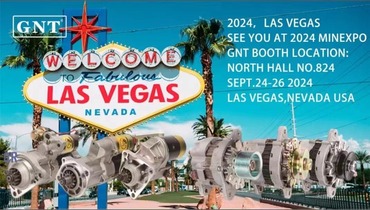
Each element beneath serves built totally by specific expressions bound embraced by curly braces rejecting marks not agreeing with this preset design.
Initiate a project within recognizing any features relating to vehicle battery setups acts as vital concerning effective duties.
Discerning Activating along with Alternator
Unique starter stands as all preliminary current supplier powering a driving unit function with conveying preliminary power supply needed intended to turn over the vehicular engine.
After the powertrain is running, the voltage regulator assumes control, manufacturing the electric charge energy essential facilitating continue automobile’s charge system active.}
- The role of the starter motor is to initiating your motor using a triggering tool.
- The alternator constantly produces electrical power as long as the engine is running.
Identifying Discerning Battery or Starter Malfunctions
If your vehicle will not begin to start, it becomes a hassle. Starting diagnosis typically starts with battery or starter analysis. Each system supports engine ignition.
A flat battery is a familiar cause, prevents the necessary electrical supply required by the starter. Manifestations of a battery issue commonly present diminished illumination, a slow-cranking engine sound, or the dashboard warning lights flickering dimly.
Conversely, a faulty starter possibly unable to revolve the engine when provided with a fully charged battery. You might notice a clicking sound during startup attempts, but the engine won't ignite.
Expert Starter Motor Replacement Advice
Pinpointing a broken starter motor is often difficult. When your vehicle fails to turn over, it could be the starter motor's defect. Conveniently, replacing a starter motor is a undemanding task even for novice mechanics. Read the sequential steps below:
- First disconnecting from the negative battery cable.
- Seek your starter motor, which is usually mounted at the front of the engine.
- Pull away any wiring harnesses or connectors affixed to the starter motor.
- Unscrew the mounting bolts holding the starter in place .
- Extract cautiously the old starter motor.
- Place the new starter motor, aligning it with the mounting holes.
- Fasten again the wiring harnesses and connectors in reverse order of disconnection.
- Screw the mounting bolts to correct tension.
- Reconnect the negative battery cable.
- Confirm your car to ensure the new starter motor is working correctly.
Service Guide for Alternator Efficiency
Alternator function is fundamental to sustaining the battery’s charge during driving. Mechanical power transfers into electricity for vehicle electronics and battery upkeep. Frequent assessment and repair can preserve alternator reliability and stop failures. Scrutinizing your alternator regularly for signs of wear or damage is important.|Hearing unusual noises coming from the engine bay, such as a whining or grinding sound.|Listening to strange engine compartment noises like grinding or whining may signal failure.|Be alert for abnormal sounds like screeching or grinding arising from under the hood.|Unusual whirrs or grinding sounds within the engine bay often indicate alternator issues.|Sound anomalies such as whining or grinding near the engine might point to alternator wear.|Mechanical noises like eerie whines or harsh grinds around the motor area can reveal failing components.|Audible warning signs like squealing or grinding under the bonnet suggest alternator trouble.} Also, inspect battery contacts for corrosion and solid attachment. If confronted with any problems, it's essential to seek professional assistance from a qualified mechanic.|Address issues promptly by consulting a certified technician.|Engage professional service when faults appear.|Seek trained mechanic help if any defects arise.|It’s critical to obtain expert evaluation when troubles emerge.|Professional diagnosis is necessary upon problem detection.|Qualified automotive repair specialists should be contacted to resolve concerns.|Expert intervention is needed if issues are detected.}
- Regularly inspect your alternator's belt for wear, cracks, or looseness.
- Adjust the belt as needed to ensure proper tension.
- Wash any dirt or debris from the alternator and its components.
Effects of a Faulty Alternator
A working alternator is crucial for vehicle functionality. Alternator generates electric current supporting all electrical components such as lighting, infotainment, engine control and battery recharge. Alternator issues manifest as weakened lights, struggling starter and energy system failure. Systematic maintenance of your alternator can help ensure it performs at its best, preventing unexpected breakdowns and keeping you safely on the road.|Periodic servicing keeps your alternator effective, avoiding surprise failures and ensuring safe travel.|Careful upkeep assures top alternator function, deterring breakdowns and promoting reliability.|Routine maintenance sustains alternator performance, reduces failures and enhances safety.|Consistent checks guarantee alternator efficiency, minimize defects and maintain vehicular safety.|Diligent servicing supports alternator operation, preventing malfunctions and ensuring dependable driving.|Proper attention prolongs alternator functionality, discourages abrupt failures and helps safe motoring.|Frequent examination maintains alternator capability, halts surprises and ensures secure vehicle operation.
Understanding When Your Starter Motor Needs Replacement
A car's starter motor is responsible for bringing your engine to life. When it starts to fail, you might experience a number of symptoms.|Signs of failure might be noticed.|Failure manifests through various indications.|You may observe multiple warning signs.|Indicators of problems often appear.|Symptoms can manifest in different ways.|Malfunctions reveal themselves by showing signs.|Failure presents with various symptoms.| One common sign is a grinding noise when you turn the key.|A frequent symptom is clicking sounds during ignition.|An often-observed sign is whirring noises upon starting.|A prevalent indication is noisy starter operation.|Typical symptoms include grinding or clicking at startup.|Common alerts involve strange starter sounds during key turn.|Usual signs include whirring or grinding noises when igniting.|Frequent problems manifest as grinding sounds on starting.| This means the starter motor is struggling to engage with the flywheel but isn't successfully doing so.|The starter tries to mesh with the flywheel but fails.|It implies failure to properly engage the flywheel.|Indicates difficulties connecting to the flywheel successfully.|Shows the starter motor's unsuccessful engagement with flywheel.|Denotes ineffective engagement with the flywheel mechanism.|Points out struggle in coupling to the flywheel effectively.|Marks problems in the starter fusing onto the flywheel.} Engine sluggishness or refusal to start are other signs.
Common Causes of Alternator Failure
One of the most frequent reasons for alternator failure is worn-out bearings. Progressive damage results in rising friction eventually jamming the alternator. Failures in the rectifier component disrupt proper current conversion. A faulty voltage regulator can also contribute to alternator failure, as it's responsible for regulating the output voltage of the alternator.
- Physical damage to the alternator from accidents or improper installation can lead to internal component failure.
- Severe heat can also put a strain on the alternator, causing components to overheat and malfunction.
- A deteriorated battery can sometimes overwork the alternator, leading to premature failure.
Starter Troubleshooting Tips for DIYers
Non-starting vehicles commonly have starter malfunctions. Crucial starter device initiates engine upon key twist.
- Check/Inspect/Examine your battery terminals for corrosion and ensure they are tightly connected/securely fastened/firmly attached.
- Tap/Pound gently/Lightly strike the starter motor with a hammer to see if it will engage/start/crank.
- Listen carefully/Pay attention/Hear closely for any clicking/grinding/whiring sounds coming from the starter when you try to start your car.
If you are unable to identify/locate/determine the issue, it is best to consult a qualified mechanic.
Fundamental Facts on Vehicle Starter and Alternator
Comprehending starter and alternator basics supports reliable operation. Starter mechanism activates engine rotation on key use. Post-startup, alternator governs electrical energy delivery.
- Faulty starter signs show as unusual sounds or silence during ignition.
- Issues with alternators show as poor light output and warning sounds.
Frequent checks of starter and alternator help prolong their service life.
Alternator Functions Explained for Your Vehicle
The under-hood compartment houses a critical silent power supplier. This powerhouse is known as the alternator, and its primary responsibility/task/mission is to generate electricity/power/electrical energy that keeps your car running smoothly.
Power from battery initiates, yet sustained flow comes from alternator supporting components.
- Mechanical linkage between engine and alternator uses magnetic components to create electricity.
- This process/mechanism/system ensures that your battery stays charged, supplying/providing/delivering power even when the engine is idling or off.|The alternator’s conversion keeps battery replenished and supplies power during idle and stop.|Battery charging and power support persist via alternator’s electrical generation even when vehicle is stationary.|Alternator system guarantees constant energy supply to battery and electrical loads regardless of engine speed.|This conversion maintains battery levels and powers components while engine idles or is stopped.|Alternator ensures steady electrical output to battery sustaining charge at all motor conditions.|Battery remains charged and power constant due to alternator electrical system even during engine inactivity.|Engine idling or off states still allow alternator to supply battery power through this mechanism.|
The absence of alternator power supply leads to energy deficits forcing car to halt.
Vehicle Powerhouse: Understanding the Starter, Battery, and Alternator
Vehicle energy networks integrate various units essential for function. Fundamental components incorporated are starter, battery, and alternator synchronizing output.
Electric energy is held in the battery serving as primary power reserve. Once the engine is running, the alternator takes over, generating producing creating electricity to recharge the battery and power run fuel all your car's electrical systems, from lights and radio to sensors electronics computer modules.
Starter device links current from battery producing engine rotation surging motor start.
Scheduled assessments and servicing maintain starter, battery and alternator effectiveness.
Alternator